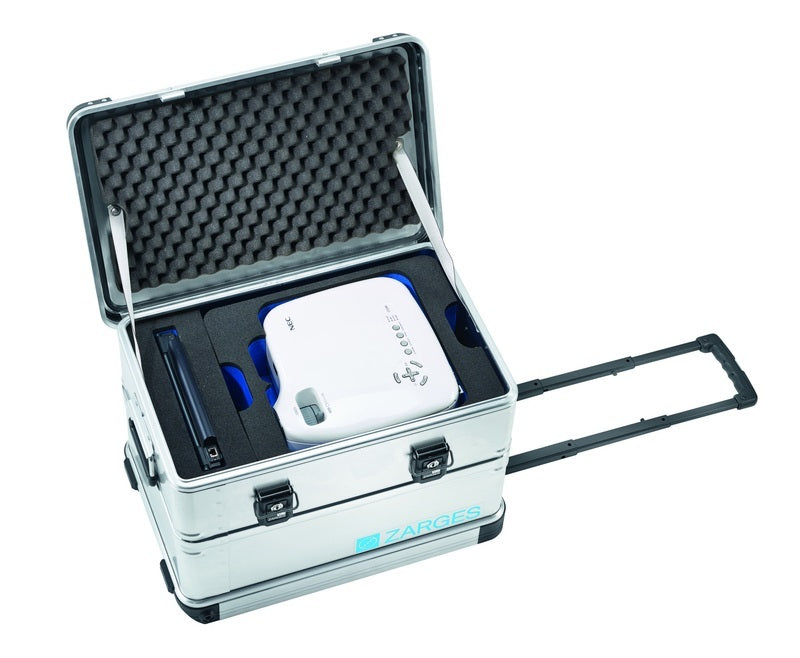ZARGES employees at our Weilheim headquarters in Germany were flabbergasted to discover in the spring that a pair of storks had begun to build a nest on the heating pipe of an assembly hall.
However: The heating pipe is not yet in operation and therefore not suitable for storks. But because suitable nesting places for storks are very rare, the company trainees have attended to the matter. In a project the trainees have not only by arrangement with the state society for the protection of birds sought out an alternative location, but also planned and built a fixture for the stork nest. The ZARGES youngsters have spent over 80 hours ensuring that the stork gains a new habitat on the company grounds.

Now an aluminium ring has been built like a cart wheel. Around the outside of this ring is a second ring which is designed to prevent small branches or other building material of the stork from falling out. Struts have been welded into the nest and finally willow branches incorporated to make it more comfortable and true to nature for the stork.
Attaching the structure to the chimney posed a particular challenge to the trainees. As it turned out during planning, the chimney is not entirely round, so much so that it was not possible to manufacture the retaining ring true to size. This has been solved by adjustable struts which can be optimally adapted to the chimney.
The nest substructure is first erected with the aid of a crane and a lifting platform. It is certainly worth the effort in that storks are faithful to their habitat and always return in the spring to their nest, extend it and use it for a number of years. The trainees have been concerned not only with the building of the nest, but also in the planning stage with the needs of storks: “We have taken great care in choosing the location to ensure that no pipes interfere with the storks’ ability to fly in and out.”
The old chimney pipe on the ZARGES grounds appeared ideal for this, particularly as it is not far from the heating pipe which the stork originally chose to build the nest. “We are now obviously hoping that the stork will return to Weilheim next year and will be thrilled with our design,” say the four project trainees.



